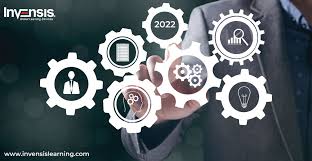Tools and Techniques for Managing Change Effectively in 2025

Change has become a constant force in the modern business world. In 2025, organizations across all industries are adapting to new technologies, shifting market demands, and evolving employee expectations. Managing change effectively is no longer an occasional challenge but an essential leadership skill. Whether it involves digital transformation, organizational restructuring, or cultural change, success depends on how well people and processes adapt together.
This blog explores the most effective tools and techniques for managing change in 2025. It focuses on how organizations can create a structured approach to transition while keeping teams motivated, engaged, and aligned with their goals.
Understanding Change Management in 2025
Change management is the process of preparing, supporting, and guiding individuals and teams through organizational transformation. In the past, change was often viewed as a one-time event. Today it is continuous and multifaceted.
Modern change management requires a balance between technology and human understanding. It involves data driven insights, emotional intelligence, communication strategies, and agile planning. In 2025, the most successful organizations will be those that treat change as an ongoing journey rather than a temporary disruption.
The Role of Technology in Change Management
Technology has become an essential enabler of effective change management. Tools that simplify communication, track progress, and measure impact make it easier for organizations to manage complex transitions.
Digital platforms now help leaders monitor real time feedback from employees, visualize project timelines, and manage training programs. Artificial intelligence and analytics tools provide insights into employee engagement and predict potential resistance areas.
Virtual collaboration platforms allow geographically dispersed teams to work together seamlessly, ensuring that everyone remains informed and connected throughout the change process. In 2025, the integration of technology into change management is not a luxury but a necessity.
Key Tools for Managing Change in 2025
Project Management Software
Tools such as Asana, Trello, or Monday have evolved into comprehensive platforms for managing change initiatives. They allow teams to organize tasks, set milestones, and monitor progress transparently. By using these tools, leaders can ensure that each stage of the change process stays on track and that responsibilities are clearly defined.
Communication Platforms
Clear communication remains the foundation of successful change management. Platforms like Microsoft Teams, Slack, and Zoom continue to play a central role. These tools enable real time communication, allowing employees to share updates, ask questions, and collaborate across departments. Consistent and open communication prevents confusion and builds trust during transitions.
Learning Management Systems
When change involves new skills or technologies, learning management systems are essential. These platforms allow organizations to deliver customized training programs, track progress, and assess knowledge retention. Continuous learning ensures that employees are well prepared to adapt to new roles and processes.
Data Analytics Tools
Data driven decision making is a major trend in 2025. Analytics tools help organizations measure the effectiveness of their change initiatives. Metrics such as employee engagement, performance improvement, and adoption rates provide valuable insights into what is working and what needs adjustment.
Feedback and Survey Tools
Gathering feedback throughout the change process helps leaders understand how employees are feeling and responding. Tools like SurveyMonkey or internal feedback systems allow teams to voice their concerns and share suggestions. This two way communication helps identify potential resistance early and allows leaders to make informed improvements.
Effective Techniques for Managing Change
Create a Clear Vision and Strategy
Successful change begins with clarity. Leaders must define what the change is, why it matters, and how it will benefit the organization. A clear vision creates alignment and reduces uncertainty. Employees are more likely to support change when they understand its purpose and long term impact.
Communicate Consistently and Transparently
Communication should not stop after the initial announcement. Regular updates keep employees informed and involved. Transparency builds trust and prevents rumors. Leaders should share progress, challenges, and milestones openly so that everyone feels part of the journey.
Involve Employees Early
Change is more effective when employees are involved in planning and decision making. Early involvement gives people a sense of ownership and reduces resistance. Leaders can create focus groups, feedback sessions, or pilot programs that allow employees to contribute their ideas and insights.
Provide Training and Support
Change often requires new skills or behaviors. Offering training programs, coaching, and mentoring helps employees feel prepared. When people feel capable, they are more confident and open to embracing change. Continuous support during and after the transition ensures long term success.
Address Resistance with Empathy
Resistance to change is natural. Instead of viewing it as a problem, leaders should treat it as an opportunity to understand employee concerns. Listening, acknowledging fears, and addressing misunderstandings can turn resistance into engagement. Empathy and patience are key qualities of successful change leaders.
Celebrate Small Wins
Recognizing achievements along the way motivates teams to keep moving forward. Celebrating progress, even in small steps, builds momentum and reinforces positive behavior. It reminds everyone that their efforts are making a difference and that the change is producing real results.
Measure and Reflect
Effective change management includes continuous evaluation. Leaders should measure results against goals and gather feedback from all levels of the organization. Reflecting on what worked and what did not allow for improvements in future initiatives. This approach ensures that change becomes a continuous learning process.
The Human Side of Change
Technology and processes play a major role in change management, but the human side remains equally important. People are at the heart of every transformation. Building trust, maintaining transparency, and providing emotional support are essential for long term success.
In 2025, organizations that combine digital tools with human centered leadership will achieve the best results. Emotional intelligence, empathy, and authenticity will be just as valuable as analytics and automation. Leaders who connect with their teams on a personal level will be able to inspire confidence even in uncertain times.
The Future of Change Management
Looking ahead, the pace of change will only accelerate. Artificial intelligence, automation, and remote work will continue to reshape industries. As organizations evolve, so will the strategies for managing change.
The future of change management will be characterized by agility, collaboration, and adaptability. Leaders will need to think ahead, act quickly, and engage their teams continuously. The ability to learn and adapt will become the most valuable skill in every organization.
Change management will no longer be a specialized function but an integral part of leadership at every level. Every manager and team member will need to understand how to navigate transformation effectively.
Conclusion
Managing change effectively in 2025 requires a combination of strong leadership, the right tools, and a people centered approach. By investing in frameworks, communication strategies, and continuous learning, organizations can navigate transformation with confidence. It is also important to note that many organizations today provide professional training for change management. Such programs help leaders and teams build the skills needed to handle transitions smoothly and create a culture that embraces progress rather than resists it.





